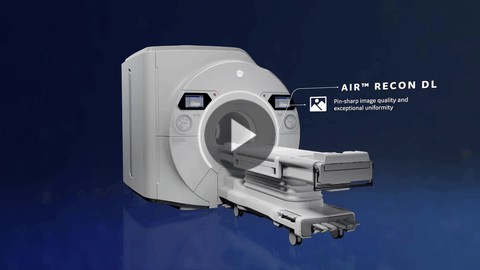Combatting climate change is everyone’s responsibility and requires working toward shared goals. With many efforts concentrated in a single area, experts believe that real progress can be made. Countries and organizations around the globe have committed to these efforts by developing impactful solutions toward shared goals, such as decarbonizing infrastructure and reducing power consumption. “Race to Zero,” backed by the United Nations, is a global campaign to rally leadership and support from industries, cities, regions, and investors for a healthy, resilient, zero-carbon recovery.[1]
According to “Health Care’s Climate Footprint” report, 4.4 percent of global climate emissions come from activities in healthcare and the industry’s reliance on products and technologies from a carbon-sensitive supply chain, which produces carbon emissions through energy consumption, transport, and products manufactured, used, and discarded.[2] In light of this, the healthcare industry is currently focused on reducing energy use, and adopting more sustainable, environment-friendly initiatives to contribute to a healthier planet. With planning and foresight, change is on the horizon.
Balancing sustainability and clinical goals in medical imaging
Balancing sustainability initiatives in medical imaging can be a challenge. Providing high-quality care and improving patient outcomes requires using the most cutting-edge imaging technology, such as magnetic resonance imaging (MRI). Implementing measures to reduce emissions and energy use while maintaining clinical goals may seem contradictory, thus, finding opportunities to achieve both objectives is ideal. Implementing successful sustainability initiatives in medical imaging can also help hospitals and care providers improve efficiency while reducing costs.[3]
Innovations in MRI are enabling health systems to work toward the shared environmental goals of reducing healthcare’s carbon footprint while continuing to improve upon the powerful imaging technology.
“GE Healthcare is committed to helping reduce our industry’s carbon emissions,” said Ioannis Panagiotelis, PhD, Chief Marketing Officer, MR, GE Healthcare. “By innovating our imaging technology with new MRI systems that are lighter and require less energy, and using recyclable materials, we can reduce our carbon footprint while continuing to improve access, productivity and precision care.”
GE Healthcare is an active participant in “The Race to Zero,” and is committed to reducing its greenhouse gas emissions and promoting sustainable development. The company has set a public goal of reducing operational emissions by 50 percent by 2030 and reaching net-zero emissions by 2050.
Reducing energy consumption in radiology
According to the Journal of the American College of Radiology (JACR), the radiology community has a significant opportunity to reduce greenhouse gas emissions and energy consumption in healthcare, impacting the industry’s overall carbon footprint for the better. The US healthcare system produces nearly 10 percent of America’s greenhouse gas emissions, and it is likely that radiology is a key contributor.[4] Similar rates of energy consumption and emissions in healthcare are reported around the world. The JACR cited that in one Swiss hospital, three computed tomography (CT) scanners and four MR systems accounted for 4 percent of the hospital’s energy consumption.[5]
Collaboratively working across the radiology industry is key to affecting change, from manufacturer to clinician. Adopting sustainability initiatives that reduce power consumption across radiology—and specifically in imaging modalities such as MR and CT—could reduce the overall healthcare emissions footprint.
Optimizing MRI innovation and sustainability efforts
MRI technology is widely relied upon for its noninvasive and nonionizing imaging capabilities; however, it’s also one of radiology’s largest power consumers. One MRI scanner uses as much energy as 26 four-person households, according to JACR.[6] But, despite its high energy consumption, MRI has transformed clinical diagnostics and become a critical tool for clinicians. It is estimated that 50,000 MRI systems are installed globally, and more than 95 million MRI scans are performed each year around the world. [7] Due to the world’s growing aging population and the prevalence of chronic health conditions, experts believe the demand for MRI will continue to rise.[8]
Faced with increasing demand for MRI exams, today’s radiology teams and hospital administrators need to consider the breadth of clinical applications and system functionalities when replacing an MRI system or investing in a new one. At the same time, they need to consider sustainability, measuring and evaluating MRI options through an environmental impact lens.
New MRI systems are being developed through that lens, resulting in systems with lighter, intelligent magnet technology and built-in features to reduce energy consumption, such as a sleep mode. One of GE Healthcare’s latest MRI systems, for example, is significantly lighter and 1.4 times more efficient than previous generations of its 3.0T technology and uses 67 percent less helium. These design changes allow installation flexibility for the 3T MRI—even on upper floors. Because the system is made with fewer materials, such as copper winding and a lighter magnet, and requires less helium, the energy needed to transport and install it is also reduced, impacting transportation costs as well.
1.4 xMore efficiency than previous generations |
67%Less helium |
Committing to a sustainable future in MRI
Advances in imaging technology have enabled radiologists to deliver personalized care as well as earlier diagnoses and disease treatments, improving patients’ health. Achieving these milestones in precision medicine while reducing their environmental impact is imperative to maintain the planet’s health.
Health systems, clinicians, and industry leaders are actively pursuing environmentally conscious activities and practices that can help preserve the planet. Imaging equipment manufacturers like GE Healthcare are committed to innovating imaging with advanced technologies and eco-forward designs with built-in sustainability features. Continuing to implement sustainable practices is key, not only within the manufacturing process but also in transport and installation procedures and throughout the product’s life cycle.

As MRI continues to be an indispensable resource for providing clinical insights and evaluation, industry leaders continue to focus on developing and delivering MRI innovation. This innovation can not only strengthen clinicians’ diagnostic accuracy with advanced imaging technology but also can affect environmental change and improve efficiencies and patient outcomes.
SIGNA™ Hero is a sustainable investment you can feel good about.
DISCLAIMER
Not all products or features are available in all geographies. Check with your local GE Healthcare representative for availability in your country.
REFERNECES
[1] United Nations Climate Change. Race to Zero campaign. United Nations Climate Change. https://unfccc.int/climate-action/race-to-zero-campaign Accessed Nov. 15, 2022
[2] Health Care Without Harm. Health care’s climate footprint. Health Care Without Harm. https://noharm-global.org/sites/default/files/documents-files/5961/HealthCaresClimateFootprint_092319.pdf Accessed Nov. 15, 2022
[3] Frost & Sullivan. Global medical imaging and informatics outlook, 2022. Frost & Sullivan. https://store.frost.com/global-medical-imaging-and-informatics-outlook-2022.html Accessed Nov. 15, 2022
[4] Journal of the American College of Radiology. Climate change and radiology. Journal of the American College of Radiology. https://www.acr.org/-/media/ACR/Images/Practice-Management-Quality-Informatics/Imaging-30/Case-Studies/Strategic-Planning/PromotingaSustainableFuture/infographic_1920.jpg Accessed Nov. 15, 2022
[5] ibid
[6] ibid
[7] Magnetic Resonance. Chapter 21. Magnetic Resonance. https://www.magnetic-resonance.org/ch/21-01.html Accessed Nov. 15, 2022; OECD Health Statistics 2017
[8] Wang L, Nie JX, Tracy CS, Moineddin R, Upshur RE. Utilization patterns of diagnostic imaging across the late life course: a population-based study in Ontario, Canada. Int J Technol Assess Health Care. 2008 Fall;24(4):384-90. doi: 10.1017/S0266462308080501. PMID: 18828931. https://pubmed.ncbi.nlm.nih.gov/18828931/


